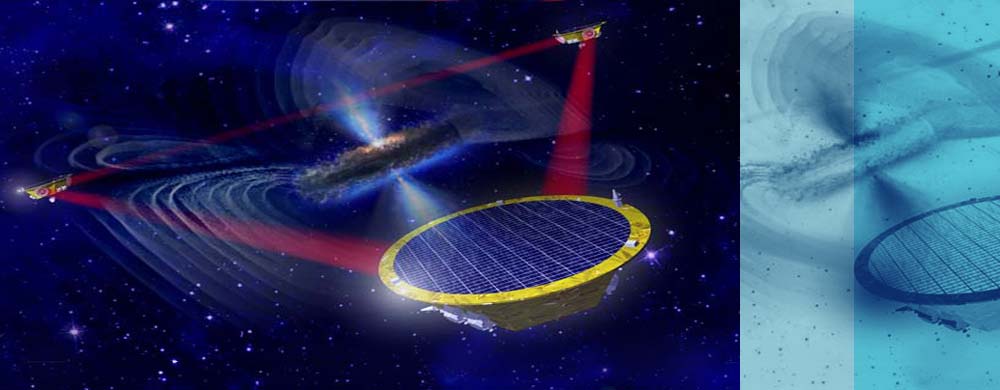
| HOME | NAPOLI GROUP MEMBERS | VIRGO | LISA | GRADUATION AND PHD THESES AND GW | CONTACT |

LISA
The Laser Interferometer Space Antenna (LISA) is born as a cooperative mission with ESA and NASA, designed to detect "riples" in space-time. As predicted by Einstein's general theory of relativity, the ripples are created during events in which very massive objects undergo strong acceleration. Examples of such events are massive black holes swallowing neutron stars or the collision of two massive blackholes. Such ripples are called gravitational waves and LISA wiil be the first mission to detect from space.
LISA's three spacecraft will form an equilateral triangle with an arm's length of about 5 million km. Each spacecraft houses two free-floating cubes made of a gold-platinum alloy inside the spacecraft, shielded from adverse effects of being in interplanetary space. The distance between the cubes in different spacecraft is monitored using highly accurate laser-based techniques. In this manner, it is possible to detect minute changes caused by passing gravitational waves.
Gravitational waves are an integral part of Einstein's theory of general relativity. When a massive body is accelerated in the proper manner,it radiates gravitational waves.
The difficulty is that, even for very massive bodies, such as black holes or neutron stars, gravitational waves are very weak and their effects are small. To detect gravitational waves, increasing the size of the detectors and going to a very quiet place is key. This is why scientists need LISA – a space-based detector, 5 million km in size.
As announced by ESA in
March 2011, due
to a modified international cooperation scenario,the mission evolved
into an European-only mission that offers a significant reduction of
the cost while maintaining its core science objectives. The provisional
name for this mission (still in the study phase) is New Gravitational
wave Observatory NGO.
| Laboratorio Onde
Gravitazionali c/o Dipartimento Scienze Fisiche Universita' di Napoli Federico II Via Cinthia Complesso Universitario di Monte S.Angelo |